Have you ever wondered how the software powering your favorite apps—like the ones you scroll through daily or the systems running massive corporations—gets from a developer’s brain to your screen? It’s a wild journey, involving coding, testing, packaging, and deployment, all tied together by something called the software supply chain. And right smack in the middle of this tech wizardry is JFrog, a company that’s making waves with its innovative platform. But here’s the million-dollar question for investors: Is JFrog stock a good long-term investment?
Who Is JFrog? A Quick Backstory
Picture this: It’s 2008, and three tech-savvy engineers—Shlomi Ben Haim, Yoav Landman, and Fred Simon—are frustrated with the mess of software development. They spot a gap: there’s no universal tool to manage all the different software packages floating around, no matter the language or tech stack. So, they roll up their sleeves and create Artifactory, a package repository that becomes the backbone of JFrog’s mission.
Fast forward to today, and JFrog isn’t just a one-trick pony. Headquartered in Sunnyvale, California, with offices worldwide, they’ve built a full-on software supply chain platform. Think of it as the ultimate toolkit for DevOps teams—tools like Artifactory for storing and managing code packages, Xray for sniffing out security flaws, and Pipelines for automating the build process. It’s like giving developers a superpower to streamline their work from start to finish.
JFrog’s reach is massive. They’ve got over 7,000 customers, including 85% of Fortune 100 companies—think Amazon, Google, Netflix, you name it. Their net retention rate (how much existing customers keep spending) is a whopping 117%, meaning clients aren’t just sticking around—they’re doubling down. In 2020, JFrog hit the big leagues, going public on the NASDAQ under the ticker FROG. Since then, their stock’s been on a rollercoaster (hello, tech sector volatility!), but their business keeps chugging along.
“JFrog’s platform is like the air traffic control for software development—keeping everything moving smoothly and securely.”
— A tech enthusiast’s take
So, JFrog’s got the creds, but can it make your wallet happy over the long haul? Let’s dig into the numbers.

Financial Performance: The Money Talk
Investing’s all about the Benjamins, right? So, let’s break down JFrog’s financials to see if they’re a cash cow or a money pit.
Revenue Growth: The Engine’s Humming
JFrog’s revenue is growing faster than a kid on a sugar high. Check out their track record:
| Year | Revenue (in millions) |
|---|---|
| 2021 | $206.68 |
| 2022 | $280.04 |
| 2023 | $349.89 |
| 2024 (proj.) | $426.60 |
- 2021: $206.68 million—solid baseline.
- 2022: $280.04 million, up 35.5%. That’s a big leap!
- 2023: $349.89 million, a 22.47% jump. Still strong, though the pace eased a bit.
- 2024 (projected): $426.60 million, aiming for 21.9% growth.
Imagine a lemonade stand that doubles its sales every summer—that’s JFrog’s vibe. Their growth beats the software industry’s average of 15-20%, fueled by the rise of DevOps, cloud adoption, and their expanding toolkit. Their cloud revenue is especially hot, growing 37% in 2023 and projected to hit 40% in 2024. More on that later!
Profitability: Still in the Red, But…
Here’s the catch: JFrog isn’t profitable yet. In 2023, they posted a $69.24 million loss. Ouch, right? But hold your horses—this isn’t a red flag waving wildly. Like many tech darlings (think Amazon in its early days), JFrog’s pouring cash into growth. They’re beefing up sales and marketing to snag new clients and pumping money into R&D to stay ahead of the pack.
The silver lining? Their gross margin is a juicy 77.98%. Translation: for every buck they make, they keep 78 cents after covering direct costs. That’s like a lemonade stand where lemons are dirt cheap, leaving plenty of profit potential once they scale back on expansion spending.
Cash Flow: Money in the Bank
Cash flow’s where JFrog shines. Over the last 12 months, they racked up:
- $94.40 million in operating cash flow.
- $91.27 million in free cash flow.
This means they’re generating enough green to fund their ambitions without begging for loans or diluting shareholders. For investors, it’s a sign JFrog can keep the lights on and keep growing.
Valuation: Paying a Premium?
JFrog’s stock isn’t cheap. As of early 2025, their price-to-sales (P/S) ratio hovers around 8x, compared to the software industry’s 6x. Why the markup? Investors are betting big on JFrog’s growth story. But in a shaky market, that premium could mean a bumpy ride if they miss a beat.
“JFrog’s financials are like a teenager with a part-time job—making good money but spending it all on cool gadgets. The question is, will those gadgets pay off?”
Competitive Landscape: Who’s in the Ring?
JFrog’s not alone in the DevOps arena—it’s a crowded cage match! Let’s size up the competition:
- GitHub: Microsoft’s heavyweight champ, with over 100 million users. It’s ace at code hosting and collaboration, but its DevOps tools (like GitHub Actions) don’t match JFrog’s supply chain focus.
- GitLab: A full-on DevOps platform—code management, CI/CD, security, the works. It’s a head-to-head rival, but JFrog’s universal package repository (think one-stop shop for all package types) gives it an edge.
- Sonatype: A security guru, like JFrog’s Xray, but narrower. JFrog’s broader platform—package management, automation, insights—wins for versatility.
Then there’s CloudBees, CircleCI, and Harness, each with their own DevOps tricks. But JFrog’s secret sauce? It’s their end-to-end software supply chain focus. They’re not just a tool—they’re the whole toolbox.
JFrog’s also got a killer network. Integrations with giants like AWS, NVIDIA, and Microsoft make their platform sticky. With 85% of Fortune 100 in their corner and a hefty slice of the package management market, JFrog’s holding its own.
“In a sea of DevOps players, JFrog’s like the captain steering the ship—focused, comprehensive, and hard to sink.”
Growth Potential: Where’s JFrog Headed?
JFrog’s not resting on its laurels. Here’s what’s fueling their future:
1. New Products: AI and Beyond
JFrog’s jumping into hot markets like AI and machine learning with JFrog ML, a tool for managing ML models in the supply chain. The MLOps market’s set to explode—think 20%+ CAGR through 2030—and JFrog’s staking its claim.
2. Powerhouse Partnerships
Teaming up with AWS, NVIDIA, and Microsoft isn’t just for show. Their AWS tie-in lets clients run JFrog’s platform natively, while NVIDIA boosts AI deployment. These deals open doors to new customers and bigger bucks.
3. Going Global
JFrog’s already worldwide, but markets like Asia-Pacific and Latin America—where digital transformation’s booming—are ripe for the picking.
4. Cloud Craze
The cloud’s where it’s at, and JFrog’s riding the wave. Their 37% cloud revenue growth in 2023 and 40% projected for 2024 show they’re cashing in on companies ditching on-premise setups.
5. Smart Buys
JFrog’s acquisition game is strong—Vdoo in 2021 beefed up security. More buys could turbocharge their offerings.
Management’s crystal ball? A 22-24% revenue CAGR through 2027, hitting $775M-$825M. If they pull that off, it’s a leap from today’s $349.89M.
“JFrog’s growth drivers are like rocket fuel—new tech, big partners, and a cloud-first world. The sky’s the limit!”
Risks: What Could Derail the Train?

No investment’s a slam dunk. Here’s what could trip JFrog up:
- Competition: GitHub and GitLab won’t go down without a fight. JFrog’s got to keep innovating or risk losing ground.
- Market Saturation: If every company jumps on DevOps, new customers could dry up.
- Tech Shifts: A game-changing dev trend could leave JFrog scrambling.
- Economic Woes: A recession might shrink IT budgets, hitting JFrog’s sales.
- Insider Moves: A director sold $1.17M in shares recently. Not a panic button, but worth watching.
- Pricey Stock: That 8x P/S ratio could crash if growth stumbles.
- No Profits: Losses are fine for now, but if growth bets flop, investors might bolt.
“Investing in JFrog’s like riding a rollercoaster—thrilling ups, but brace for the dips.”
Conclusion: Should You Buy JFrog Stock?
So, is JFrog stock a good long-term investment? Let’s weigh it up:
The Bull Case
- Growth Machine: 20%+ revenue growth, cloud surging, and a $775M+ target by 2027.
- Market Leader: 85% of Fortune 100 and a unique supply chain niche.
- Future-Proof: AI, partnerships, and cloud trends in their favor.
The Bear Case
- No Profits: $69M loss in 2023—growth’s pricey.
- Risky Business: Competition and market swings could sting.
- Premium Price: 8x P/S means no room for error.
Verdict: JFrog’s a gem for long-term investors who can stomach tech’s wild ride. If you believe in DevOps’ future and don’t mind waiting for profits, JFrog’s a solid bet. Diversify, keep an eye on earnings, and consult a pro if you’re unsure.
“JFrog’s a frog worth kissing—might just turn into a prince for patient investors.”
FAQ: Your Burning Questions Answered
Q: What does JFrog do?
A: JFrog’s platform manages and secures the software supply chain—think package storage (Artifactory), security scans (Xray), and automation (Pipelines).
Q: Is JFrog profitable?
A: Nope, they lost $69.24M in 2023. But their 77.98% gross margin shows a strong core.
Q: How’s JFrog’s revenue growth?
A: Up 22.47% to $349.89M in 2023, with $426.6M projected for 2024.
Q: Who’s JFrog fighting in the market?
A: GitHub, GitLab, Sonatype—big names, but JFrog’s end-to-end platform stands out.
Q: What risks should I watch?
A: Competition, saturation, tech shifts, and market volatility. Plus, that lack of profits.





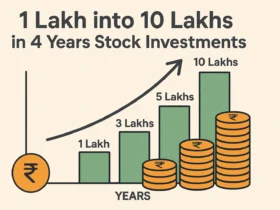


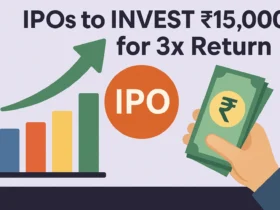










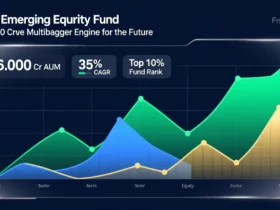
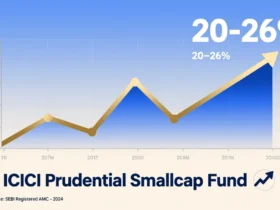






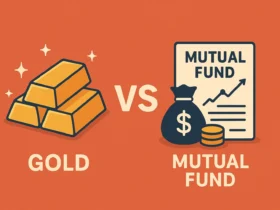



Leave a Reply